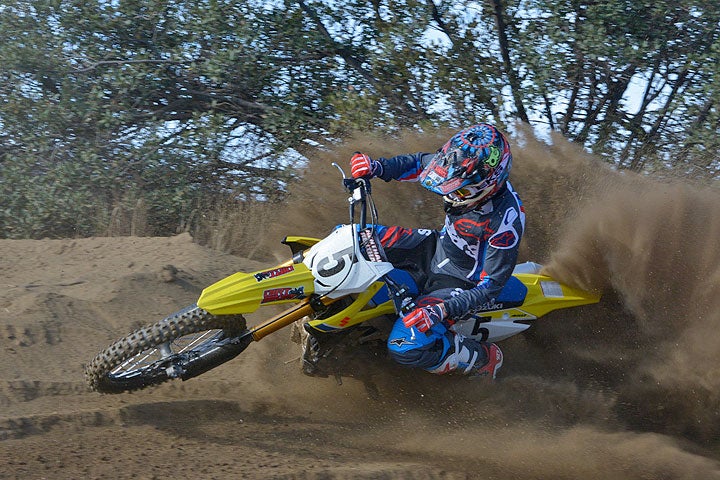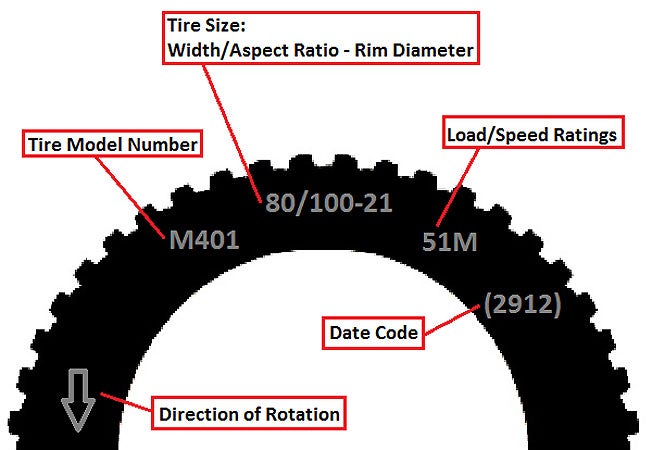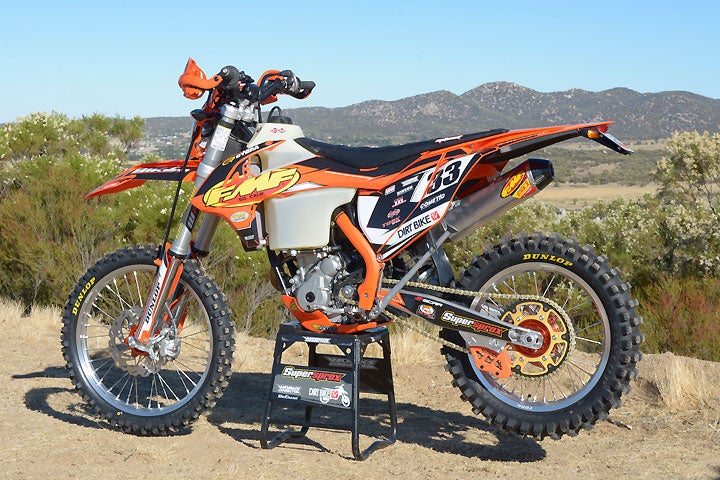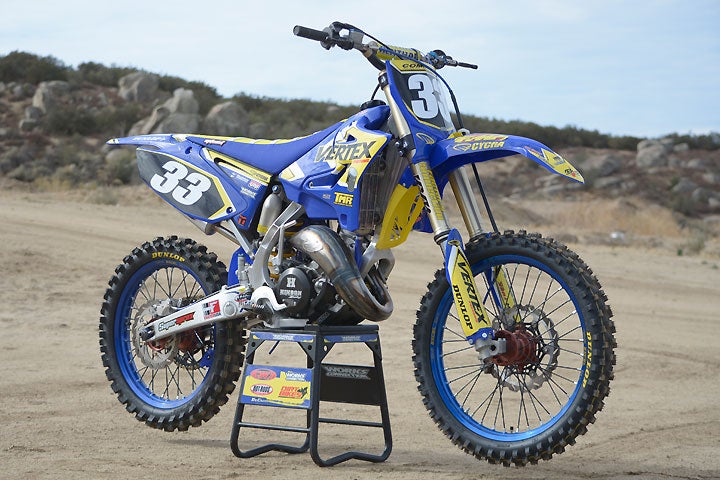Time was when a dirt bike rider could walk into his local dealership, peruse the various dirt bike tire sizes in inches and just know what size tire worked best for his machine.

Back when most dirt bike tire sizes were displayed in inches for both the width and diameter, it was easy-peasy. They knew that a 4.50-5.00″ x 18″ tire was best for a 250-500cc machine, while 4.00″ x 18″ was best for a 250cc machine and a 3.50-3.75″ x 18″ tire was best for a 125cc two-stroke. But then the tire manufacturers made a wholesale switch to the metric system, making it a bit more difficult to decipher dirt bike tire sizes by eye-balling the good old ‘Merican measurement in inches. While it still isn’t that difficult to understand basic dirt bike tire sizes when simply replacing your OEM tire with a tire whose metric sizing is identical, what if you want to go to a slightly wider or narrower width to suit your application? What do those numbers on the side of the tire actually mean?
Understanding Aspect Ratio
Dirt bike tire sizes are most often expressed on the sidewall of the tire with a series of numbers separated by a slash mark ( / ) and then a dash behind the second number ( – ) before the final number, which corresponds to the rim diameter size. So, for example, looking at a typical dirt bike rear tire you’ll see a number that reads something like 110/90-19 or 120/80-19 (the numbering on the front tires will be similar and usually end with a -21). So which one is right for you? The answer may be both. Or neither. But deciphering the actual numbers may help you make a more informed decision.

The first number, in this case 110 or 120, is the measurement of the widest distance between the sidewalls of the tire, in millimeters. Thus, a 120 tire measures 120mm wide while a 110mm measures wide. Doing a little math, we can calculate the actual width of the tire in inches by taking these three-digit numbers and dividing them by 25.4. Thus, a 110mm tire measures a little more than 4.3 inches in width (4.330 inches), and the 120mm tire measures a little more than 4.7 inches in width (4.724).
However, the second number is also important because it refers to the sidewall aspect ratio. In the case of our two examples the aspect ratio numbers are 90 and 80 respectively. The aspect ratio denotes the tire’s sidewall height, but it is not a millimeter measurement. Instead, it is a percentage measurement, telling us that the tires sidewall height from rim to tread is 90 percent of the 110mm wide tire’s section width and 80 percent of the 120mm tire’s section width. Doing some more math, we can take the first tire’s width of 4.330 inches and multiply it by 90 percent to determine that the 110mm tire’s sidewall height is just under 3.9 inches (3.897) and the 120mm tire’s sidewall height is just under 3.8 inches (3.779). Thus, while the 110mm tire is narrower, it’s also taller. When comparing two tires of the same width, a tire with a largerr aspect ratio number will be taller than a tire with a smaller aspect ratio number.
But what about when they’re different sizes? All things being equal (in other words, assuming that both tires feature the same ply rating, the 110mm tire will exhibit more sidewall flex than the 120mm tire even though the 120mm tire puts more tread on the ground. If we put that into perspective using the trends in the high-performance automobile tire world, the trend has been to go wider and stiffer for increased on-road traction. These tires, with their rubberband-width sidewalls deliver the flex of your average rock when driven over rough ground, yet they exhibit traction that can pretty much blow away many slick tires with much taller sidewalls.

That said, your performance may vary when it comes to dirt bike tire sizes, as there are other factors to consider, such as tire pressure, dirt conditions and the load factor on the tire. In the case of the former, that’s why every manufacturer offer several models with various knobby patterns as well as numerous compounds within tire models of the same knobby pattern to optimize traction for the conditions you’re most likely to encounter. We could discuss compound variations–usually referred to as Soft, Intermediate and Hard–but that’s a whole other story. When in doubt, however, go for the Intermediate compound, which is generally specified by the various tire manufacturers as the closest thing to their all-around or do-it-all tire.

When dealing with tire sizes for your particular bike, it’s also important to consider engine size and potential power output. In other words, you’d be crazy to stick a 120mm wide tire on a 125cc two-stroke because the weight and amount of tread that tire puts on the ground may be a negative because it saps more power and makes your engine work harder to spin the tire than a narrower tire that may not yield as much overall traction. Remember, a little wheel spin isn’t a bad thing. By the same token, sticking a skinny 90mm tire on a ground-shredding 450cc four-stroke may lead to a lack of traction and premature knobby wear.
So, how do you know what dirt bike tire sizes are best for your application? Simple. Step one is to consult your owner’s manual for tire size recommendations. Step two would be to consult the manufacturer of the tire brand you are thinking of purchasing, as they can steer you in the right direction by recommending not only proper dirt bike tire sizes but also the optimum compound for your part of the country–trust us, they’ve got loads of data on this stuff. Another thing you can do is cruise the pits at your local motocross or off-road race and see what tire models and sizes your competition is running. Any or all of these suggestions should put you in the hunt.
 Your Privacy Choices
Your Privacy Choices